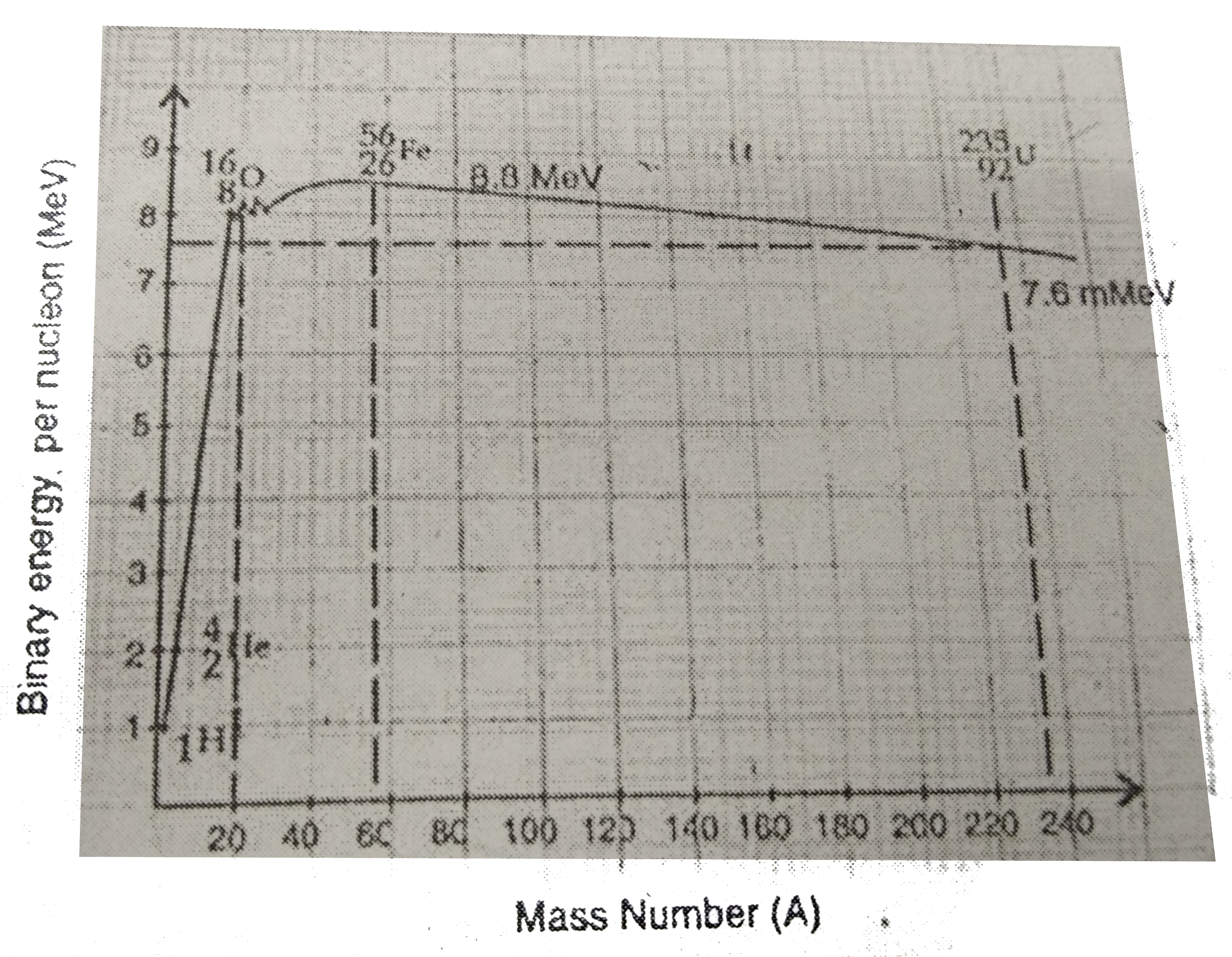(a) Draw the plot of binding energy per nucleon (BE/A) as a function of mass number A. Write two important conclusions that can be drawn regarding the nature of nuclear force.
(b) Use this graph to explain the relase of energy in both the processes of nuclear fusion and fission.
(c) Write the basic nuclear process of neutron undergoing β-decay. Why is the detection of neutrinos found very difficult?
Video Solution
Text Solution
(a) Plot of binding energy per nucleon as the function of mass number A is given as below :
Following are the two conclusion that can be drawn regarding the nature of the nuclear force :
(i) The force is attractive and strong enough to produce a binding energy of few MeV per nucleon.
(ii) The constancy of the binding energy in the range 30<A<170 is a consequence of the fact that the nuclear force is short range force.

(b) Nuclear fission : A very heavy nucleas (say A = 240) has lower binding energy per nucleon as compared to the nucleus with A = 120. Thus, if the heavier nucleus breaks to the higher nucleus with high binding energy per nucleon, nucleons are tightly bound.
This implies that energy will be released in the process which justifies the energy relase in fission reaction.
Nuclear fusion : When two light nuclei (A<10) are combined to form a heavier nuclei, the binding energy of the fused heavier nuclei is mor than the binding energy per nucleon of the lighter nuclei. Thus, the final system is more tightly bound than the initial system. Again the energy will be relased in fusion reaction.
(c) The basic nuclear process of neutron undergoing β - decay is given as -
n→p+¯e+→v
Neutrinos interact very weakly with matter so, they have a very high penetrating power. That's why the delection of neutrinos is found very difficult.
|
Topper's Solved these Questions
- XII BOARDSBOOK - XII BOARD PREVIOUS YEAR PAPER ENGLISHCHAPTER - XII BOARDSEXERCISE - [Set- II]
4 Videos
- XII BOARDSBOOK - XII BOARD PREVIOUS YEAR PAPER ENGLISHCHAPTER - XII BOARDSEXERCISE - [Set-III]
3 Videos
- XII BOARDSBOOK - XII BOARD PREVIOUS YEAR PAPER ENGLISHCHAPTER - XII BOARDSEXERCISE - SET-III, DELHI BOARD
4 Videos
- SAMPLE PAPER 2019BOOK - XII BOARD PREVIOUS YEAR PAPER ENGLISHCHAPTER - SAMPLE PAPER 2019EXERCISE - SECTION D
6 Videos
Similar Questions
Knowledge Check
The temperature required for the process of nuclear fusion is nearly :
A1000KB104KC105KD107K
The graph between the binding energy per nucleon (E) and atomic mass number (A) is as-
View SolutionEnergy given out by the sun is due to nuclear fusion.
View SolutionWrite two characteristic features of nuclear force.
View Solution(a) State one similiarity in the process of nuclear fission and fusion.
(b) State two differences between the process of nuclear fission and fusion.
View SolutionDifferentiate between nuclear fusion and nuclear fission.
View SolutionNuclear fusion is not found in
View SolutionWrite two important limitations of Rutherford nuclear model of the atom.
View Solution
